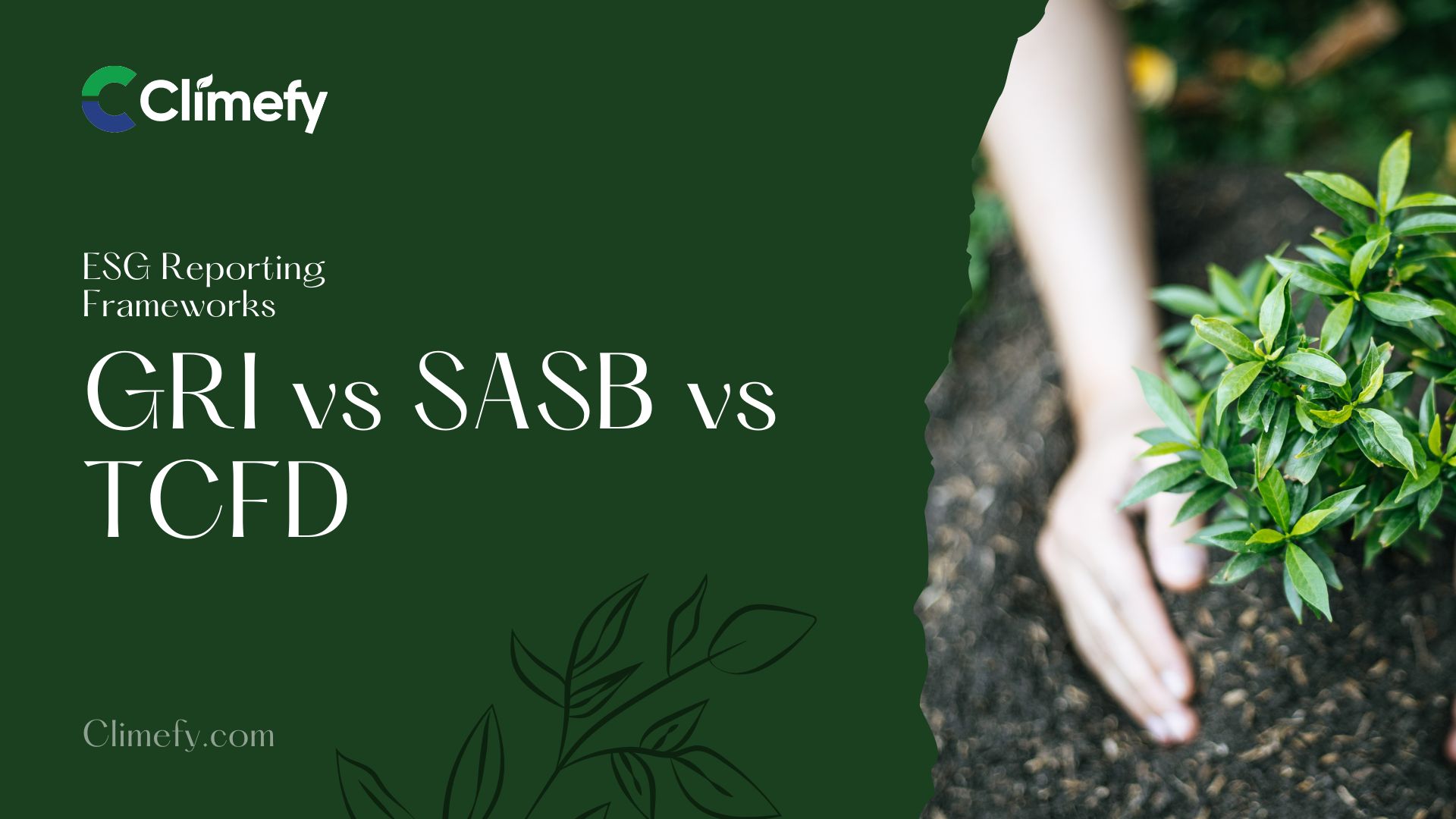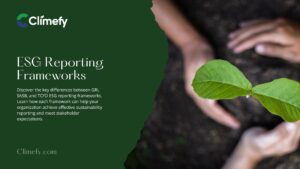
Environmental, Social, and Governance (ESG) reporting has become a cornerstone of modern business strategy, driven by growing demands for transparency from investors, customers, and regulators. ESG reporting frameworks like the Global Reporting Initiative (GRI), Sustainability Accounting Standards Board (SASB), and Task Force on Climate-related Financial Disclosures (TCFD) provide structured guidelines to help organizations measure and communicate their sustainability performance. Each framework has a unique focus, making them suitable for different reporting needs. This article offers a detailed comparison of GRI, SASB, and TCFD, exploring their principles, applications, and benefits to help organizations choose the right framework.
Key Points of the Article:

ESG reporting involves disclosing a company’s performance and strategies related to environmental, social, and governance factors. Unlike traditional financial reporting, ESG reporting focuses on non-financial metrics that reflect a company’s impact on society and the environment. It seems likely that effective ESG reporting enhances transparency, builds stakeholder trust, and supports strategic decision-making.
ESG reporting is critical for several reasons:
Stakeholders such as investors, regulators, employees, and consumers rely on ESG reports to make informed decisions. Investors use them to assess financial risks, while consumers and employees evaluate a company’s commitment to sustainability.
ESG reporting frameworks provide standardized guidelines for disclosing sustainability performance. The three most prominent frameworks—GRI, SASB, and TCFD—cater to different aspects of ESG reporting, making them complementary in many cases.
GRI, established in 1997, is one of the most widely adopted frameworks globally, offering comprehensive standards for reporting on economic, environmental, and social impacts.
SASB, founded in 2011, provides industry-specific standards focusing on ESG issues that are financially material, designed to aid investors in comparing companies within the same sector.
TCFD, created in 2015 by the Financial Stability Board, focuses on climate-related financial risks and opportunities, providing recommendations to integrate these into financial reporting.
The Global Reporting Initiative (GRI) is an independent, non-profit organization that provides a comprehensive framework for sustainability reporting. It helps organizations report on their environmental, social, and economic impacts, emphasizing stakeholder inclusiveness and materiality. GRI’s standards are widely used globally, making it a go-to framework for organizations seeking to address diverse stakeholder needs.
GRI was launched by the Coalition for Environmentally Responsible Economies (CERES) and the Tellus Institute, with support from the United Nations Environment Programme (UNEP). Its standards have evolved, with the latest GRI Standards introduced in 2016, offering modular guidelines for flexible reporting.
GRI’s framework is built on principles that ensure robust reporting:
To implement GRI, organizations follow these steps:
| Aspect | Details |
|---|---|
| Advantages | – Comprehensive ESG coverage – Globally recognized – Stakeholder-focused – Flexible for various sectors |
| Limitations | – Resource-intensive – May include non-financially material topics – Complex to implement |
The Sustainability Accounting Standards Board (SASB) provides industry-specific standards to help companies disclose ESG factors that impact financial performance. With standards for 77 industries, SASB is tailored for investors seeking comparable, decision-useful data.
Founded in 2011, SASB developed its standards through extensive stakeholder consultation. In 2022, it merged with the International Integrated Reporting Council (IIRC) to form the Value Reporting Foundation, later integrated into the International Sustainability Standards Board (ISSB).
SASB’s standards are organized by industry, addressing unique ESG risks and opportunities. For example:
SASB focuses on financial materiality, identifying ESG issues likely to affect a company’s financial condition or operating performance, making it highly relevant for investors.
To use SASB, organizations:
| Aspect | Details |
|---|---|
| Advantages | – Industry-specific – Investor-focused – Streamlined reporting – Supported by major investors |
| Limitations | – Limited to financial materiality – May not address broader stakeholder concerns – Industry classification challenges |
The Task Force on Climate-related Financial Disclosures (TCFD) provides recommendations for disclosing climate-related risks and opportunities. Established in 2015 by the Financial Stability Board, TCFD focuses on integrating climate considerations into financial reporting.
TCFD released its recommendations in 2017, gaining widespread adoption. It was disbanded in 2023, with its monitoring transferred to the IFRS Foundation.
TCFD’s framework is structured around:
To adopt TCFD, organizations:
| Aspect | Details |
|---|---|
| Advantages | – Climate-focused – Clear framework – Widely supported – Enhances resilience |
| Limitations | – Narrow climate focus – Resource-intensive – Quantification challenges |
While GRI, SASB, and TCFD all enhance ESG transparency, they differ in scope, focus, and audience.
| Criteria | GRI | SASB | TCFD |
|---|---|---|---|
| Scope | Broad ESG coverage | Industry-specific ESG issues | Climate-related disclosures |
| Focus | Stakeholder impacts | Financial materiality | Climate risks and opportunities |
| Audience | Diverse stakeholders | Investors | Investors, lenders, and insurers |
| Approach | Principles-based | Standards-based | Recommendations-based |
Many organizations combine frameworks to meet varied stakeholder needs. For example, a company might use GRI for its sustainability report, SASB for investor disclosures, and TCFD for climate-specific reporting.
Selecting an ESG framework depends on organizational goals and stakeholder expectations. Consider:
A tech company might use SASB to report on data privacy, GRI for employee diversity, and TCFD for climate risk management, ensuring comprehensive coverage.
The ESG reporting landscape is evolving, with trends shaping its future:
GRI, SASB, and TCFD offer distinct approaches to ESG reporting, catering to different stakeholder needs and organizational goals. By understanding their principles and
applications, companies can enhance transparency, manage risks, and drive sustainable growth. As ESG reporting evolves, staying informed about trends and regulations will be crucial for effective reporting.
Disclaimer: This article provides general information on ESG reporting frameworks and is not a substitute for professional advice tailored to specific organizational needs.
References: